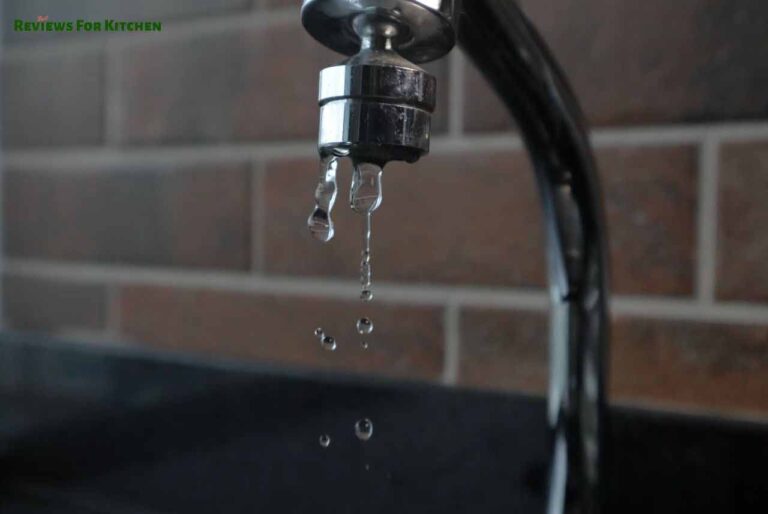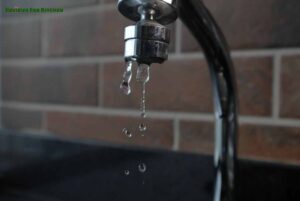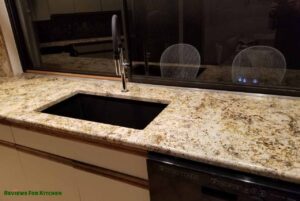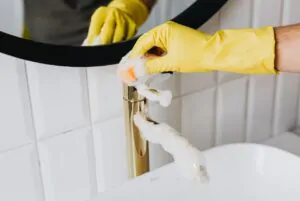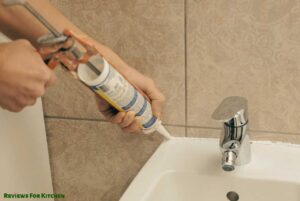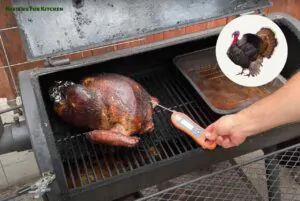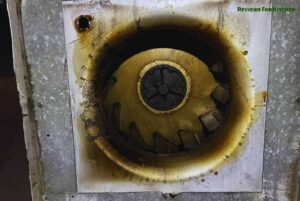No faucet is a permanent fixture. As a result, faucet-related issues can arise at times. Among them, a leaky faucet is one of the most encountered problems by the plumbers. A running faucet not only costs you extra water and bills, but it will also annoy you with a constant dripping sound throughout the day. A leaky faucet that drips water per second wastes five gallons of water each day! Fixing a leaky faucet is not a big deal. However, complexity increases when you find the faucet’s handle non-removable. Therefore, this article will focus on How to fix a leaky faucet with a (seemingly) non-rem handle.
Go through the entire article to learn about the reasons behind running faucets and the procedures to fix them. So, let’s begin.
What are the main factors behind a dripping faucet?
A faucet consists of many components that work together to control the water flow. These parts often get loose after years of use, resulting in a dripping faucet. Besides, other factors, such as damaged seals and washers, clogged aerators, and loose faucet handles can lead to a leaky faucet. Therefore, it is crucial to understand the factors behind a running faucet before proceeding further.
Damaged O-rings:
O-rings are basically ring-shaped rubber seals. Its deterioration may lead to the water dripping at the faucet’s base and the mixing of warm and cold water.
Damaged washer:
Faucet washers have a vital role in controlling water flow. It prevents water flow whenever you turn off the faucet. However, a damaged washer can not perform its function properly, resulting in uncontrolled water dripping.
Loose Handles:
The tap’s handles are essential for turning it on and off. Sometimes the handles get loose and fail to prevent the water from dripping.
Damaged Cartridge or stem:
Cartridges are one of the most vital components of a faucet for controlling the water flow. Cartridges are more common in one-handled faucets and they control the flow of both hot and cold water.
In contrast, stems are more available in two-handled faucets. Each stem is responsible for controlling the hot and cold water flow separately. If the Cartridge or stem gets damaged, people may find the faucet leaking from the stem or cartridge.
Is the handle really non-removable?
There are basically two models of handles available for faucets: single handle and double handle. Nowadays most faucet handles are removable, but the knobs remain hidden (for instance, they are set under the faucet handle cover). If the faucet features a quarter-or half-turn, there can be screws facing opposite to you. Many individuals mistakenly believe that the handles cannot be removed due to the hidden knobs, which is not the case. You just haven’t noticed it yet.
Additional tips for fixing dripping faucets:
- Sometimes, water dripping takes place due to loose handles. Therefore, try to tighten the handle knob and check the water dripping before removing the handle.
- Get a professional plumber to resolve the issue if you have any confusion over the procedure.
How to fix a leaky faucet with (seemingly) non-rem handles?
As aforementioned, modern faucet handles are mostly removable. If you really can’t figure out any knobs to remove the handle, then you most probably have a Cartridge faucet. Therefore, the below-mentioned process for fixing a leaky faucet with (seemingly) non-rem handles will be based on the Cartridge faucet.
Required tools:
- Adjustable pliers
- Allen keys
- Screwdriver
- Head screwdriver
Step-by-step instructions to fix a leaky faucet:
Turning off the water supply:
No matter if you are fixing a leaky sink or bathtub faucet, always remember to stop the water supply by turning the shut-off valve clockwise. In the case of a sink faucet, the valve will be under the sink. Bathtub shutoff valves generally remain hidden behind the access panel.
Unscrewing the knob from the faucet’s handle:
- Remove the handle’s cap
- Locate the handle’s screw under the handle
- Now place the end of the Allen key into the screw
- Twist the key counterclockwise.
- Detach the handle’s screw and keep it in a safe place.
Taking off the faucet’s handle:
It’s time to lift the handle after unscrewing it. With enough force, simply pull the handle up. Certain handles feature an internal discharge system that becomes active when pressured with sufficient force.
Loosening the “retaining clip:”
Once you have removed the faucet handle, you can see the “retaining clip” that helps to keep the cartridge in place.
Firstly, loosen the nut by turning the appropriate pliers counterclockwise around the nut.
Now, remove the nut.
Detaching the Cartridge:
- Firmly hold the upper part of the cartridge
- Gently wiggle the cartridge to loosen it
- Now pull it up and remove it.
Apply Silicone Grease:
- Take a bit of silicone faucet grease on your finger
- Now apply the grease on the cartridge’s body with a finger
- Put some grease on the O-rings too
Placing the replacement cartridge
- Individuals can only replace Cartridges. It is not possible to repair the Cartridge.
- Get a new Cartridge
- Now place the new cartridge’s tabs properly on the faucet’s slot
- Pull it down and fix it with the slots.
- Now, reinstall the retaining nut by using a wrench
Reinstall the handle:
- Now reinstall the handle in place again
- Tighten the handle’s screw with an Allen key
Turning on the water supply and checking the water flow:
- Turn on the shut-off valve to get the water supply
- Now turn on the faucet for a minute and check the flow
Read More: Maintaining your kitchen faucet is essential for its longevity and performance. Regular cleaning with mild soap and water and avoiding harsh chemicals can prevent damage to the finish. Additionally, checking for leaks and addressing issues promptly is important. For more tips, check out our guide on Caring for a Kitchen Faucet.
Conclusion
Faucets can get leaked anytime. If you don’t know the fixing process, then a leaky faucet is enough to give you a hard time. The fixing process is also very facile. However, faucet handles sometimes become a great confusion for people. Since the knobs remain mostly invisible, people often think that the handle of the faucet is non-removable. That’s why I have discussed how to fix a leaky faucet with (seemingly) non-rem handles. I hope readers can now fix the dripping faucet on their own.
Related articles about kitchen faucet
- Kitchen Faucet vs Bathroom Faucet – What’s The Difference?
- What Are The Standard Sizes For Kitchen Faucets?
- Why Is The Water In My Faucets Brown And Cloudy?
- Kitchen Faucets Buying Guide | Complete Buying Guide
- How to Caulk a Kitchen Sink : 12 Easy Steps
- How to Measure a Kitchen Sink – Step By Step Guide
- How to Change a Water Filter Cartridge With Few Easy Steps
- How to replace a Kitchen Faucet | Replace it within an hour
- How to Fix a Leaking Kitchen Faucet in a Proper Way
- How to Clean Kitchen Faucet – Basic and Deep Cleaning Process
- How to Repair Low Pressure in A Kitchen Faucet? – The Plumbing Solution
- How to Remove Slotted Cleanout Plug: Tools and Techniques
- How To Care for A Kitchen Faucet

